Story by Kate McKenna • CBC - Jul 16, 2023
Fire knows no borders in Canada — but firefighters' workplace compensation for some types of cancer does. A new federal law could change that.
How provinces compensate firefighters for workplace-related cancers — the most deadly occupational risk they face — varies widely.
Provincial workplace safety boards link different cancers to firefighting, making it harder for some firefighters to access compensation.
"To have this inequality of coverage for firefighters when they get diagnosed with those illnesses is a real disservice to those who serve the community," said Neil McMillan, director of science and research at the Occupational Health, Safety and Medicine Division of the International Association of Fire Fighters (IAFF).
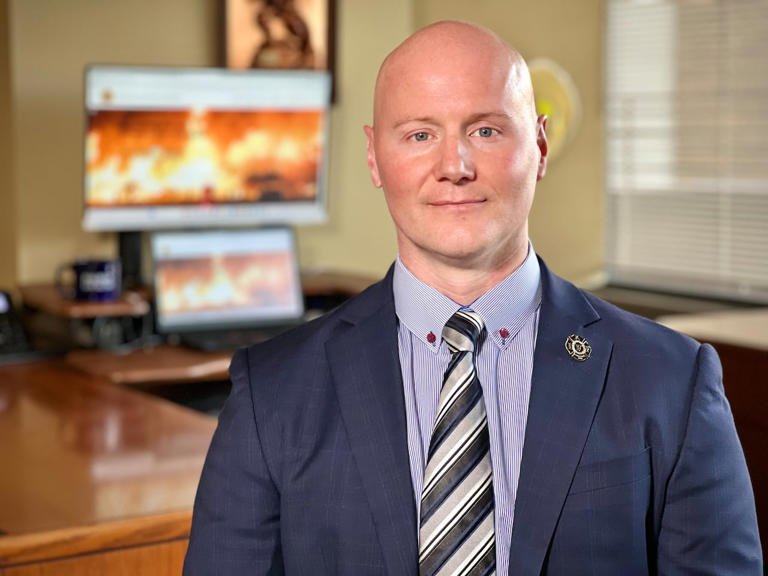
Neil McMillan, director of science and research for the Occupational Health, Safety and Medicine Division of the IAFF, said cancer is the greatest occupational threat faced by firefighters. (Jean-François Benoit )© Provided by cbc.ca
Earlier this year, MPs and senators passed a private member's bill — championed by Liberal member of Parliament Sherry Romanado — that seeks to standardize that compensation.
It's designed to create a national framework for the prevention and treatment of cancers within a year.
"We're delighted that it made its way through the House and the Senate unanimously in support and became law," said Romanado.
"Strangers come to me in tears ... saying, 'You're going to save lives.' It's been really overwhelming."
The law, formerly known as Bill C-224, will see provinces and the federal government share research about occupational cancers for firefighters, with the goal of establishing greater consistency in coverage across the country.
Romanado, whose spouse and father served as firefighters, said it felt like fate when she was chosen to present a private member's bill shortly after a constituent approached her about this issue.
Jean-François Couture was 44 years old, with two school-aged children, when he was diagnosed in 2017 with multiple myeloma, an incurable blood cancer.
He had served as a firefighter with Longueuil, Que. for more than 20 years before his diagnosis.
While his form of cancer is covered by Quebec's workplace health and safety board, he knows that others aren't so lucky — which is why he reached out to Romanado about a legislative fix.
"I was thinking, what can I do to help other people?" he told CBC News.
Related video: Canada at risk of burning out its firefighters (cbc.ca)
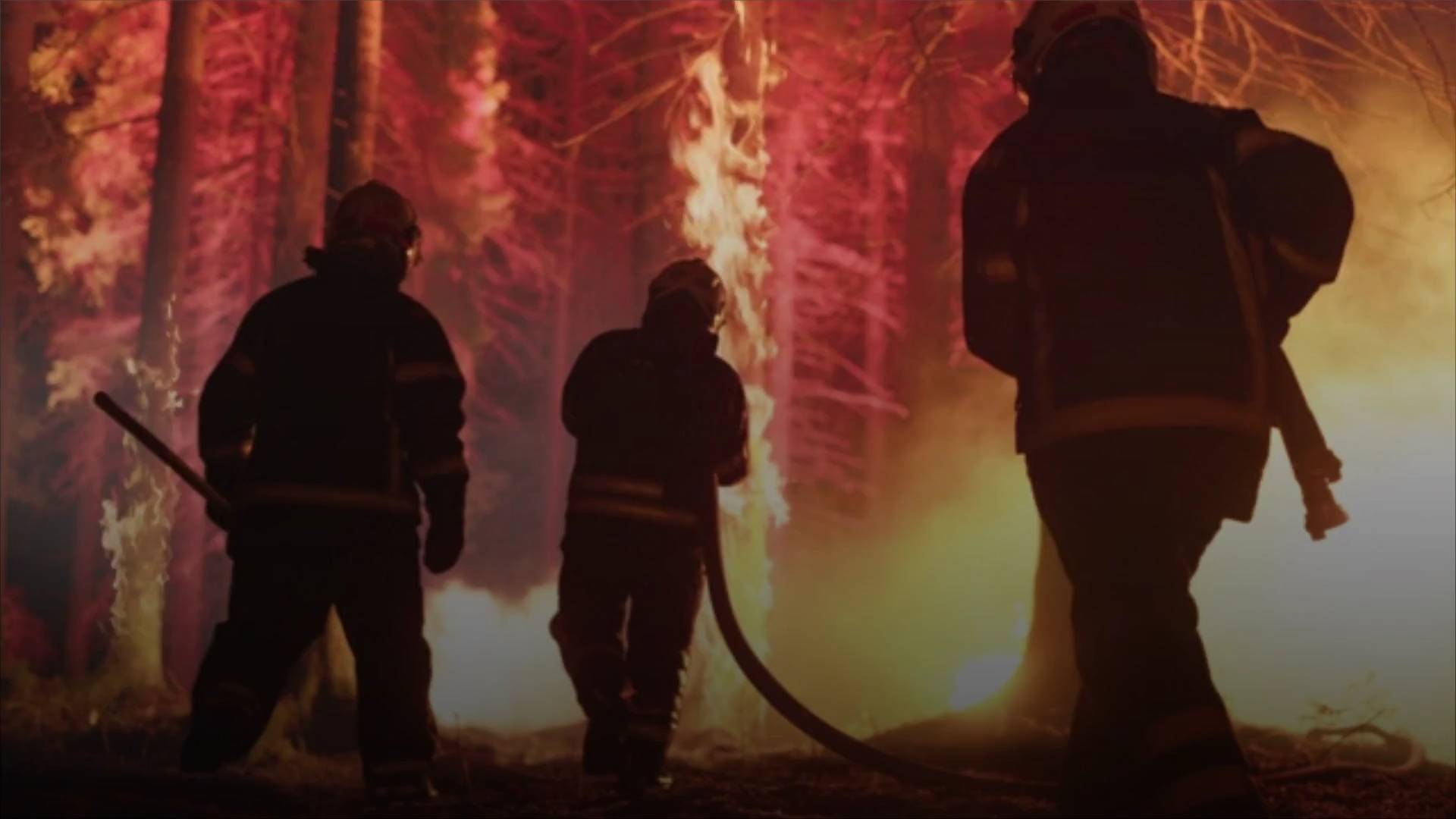
Cover Media USInternational Firefighters Join Forces to Fight Canadian Wildfires
1:30
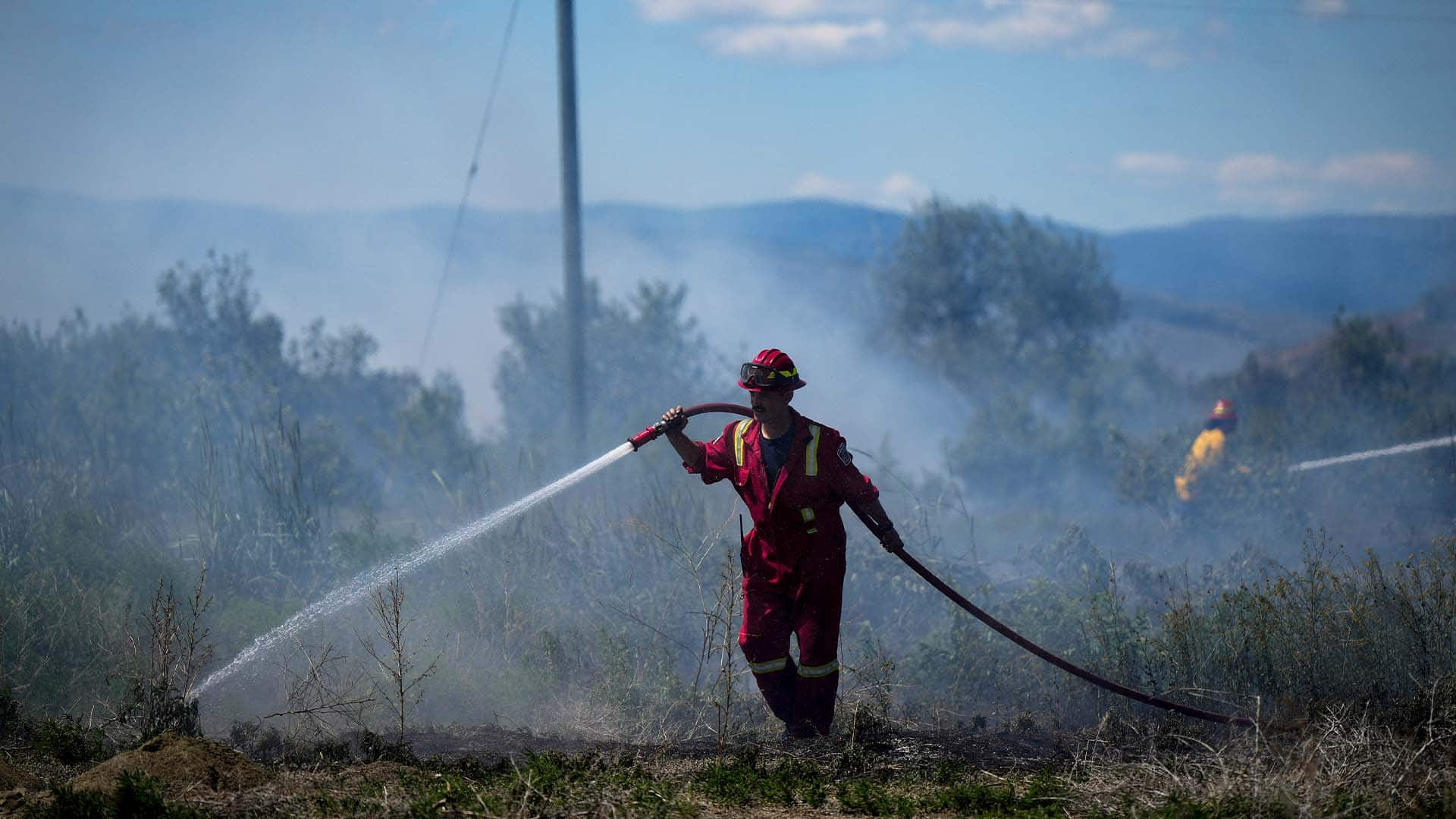
cbc.caNo mandatory PPE for Canadian wildfire fighters, but some want change
2:17

Global NewsSecuring enough firefighting resources for B.C. wildfire season
3:18
After Couture contacted Romanado, she met with the International Association of Firefighters and the Canadian Association of Fire Chiefs to discuss the problem.
"When I started looking into it, [I] realized that there really was a huge discrepancy across provinces," she said.
Change isn't guaranteed
The new law requires the establishment within a year of a new national framework for the prevention and treatment of cancers among firefighters.
Authorities from across the country will convene to discuss coverage, share research and data across provinces and talk about best practices for preventing cancers.
But the law doesn't guarantee that provincial workplace safety authorities will end up covering more types of cancer for firefighters.
"At the end of the day, [the provinces] decide what to do, but this way at least we know that everyone gets the same information," said Romanado.
The two provinces currently covering the lowest number of presumptive cancers for firefighters — New Brunswick and Quebec — both say they're willing to expand their coverage.
In a media statement, New Brunswick's workers compensation board said it's open to expanding cancer coverage for firefighters.
"In fact, we are currently exploring this," said WorkSafeNB spokesperson Laragh Dooley in a media statement.
Quebec's workplace health and safety board, CNESST, said in a media statement that changes to Quebec law in 2021 made it easier to add new occupational diseases to its coverage.
CNESST said it has struck a committee to look at expanding the number of cancers affecting firefighters that it covers.
The International Association of Fire Fighters (IAFF) estimates that 95 per cent of line-of-duty deaths are attributable to cancer.
Burning materials release carcinogens. Firefighters are also exposed to chemical byproducts from combustion or debris.
Even diesel exhaust fumes and some foams used in firefighting can expose firefighters to cancer risks, said Paul Demers, director of the Occupational Cancer Research Centre based at Ontario Health in Toronto.
"There's really been a long-term concern about the risk of cancer in firefighters," he said. "In the last 10 or 15 years, there's been more and more studies that have been coming out and giving us a more consistent picture of which kinds of cancers ... we're seeing more in firefighters than the general population."
The growing number of wildfires in Canada presents a unique threat. Because wildfire work involves long deployments in remote areas, McMillan said, those firefighters don't have the same access to personal protective equipment they would if they were working on a burning building.
"Firefighters take an oath to put themselves in harm's way, and that involves being exposed to carcinogens and toxicants," he said.
Romanado said her hope for the bill is that it leads to better practices for cancer prevention. It also designates January as "Firefighter Cancer Awareness Month."
"I'm just looking forward to getting the work done so that we can be there and support those who are supporting us," she said.

Cover Media USInternational Firefighters Join Forces to Fight Canadian Wildfires
1:30

cbc.caNo mandatory PPE for Canadian wildfire fighters, but some want change
2:17

Global NewsSecuring enough firefighting resources for B.C. wildfire season
3:18
After Couture contacted Romanado, she met with the International Association of Firefighters and the Canadian Association of Fire Chiefs to discuss the problem.
"When I started looking into it, [I] realized that there really was a huge discrepancy across provinces," she said.
Change isn't guaranteed
The new law requires the establishment within a year of a new national framework for the prevention and treatment of cancers among firefighters.
Authorities from across the country will convene to discuss coverage, share research and data across provinces and talk about best practices for preventing cancers.
But the law doesn't guarantee that provincial workplace safety authorities will end up covering more types of cancer for firefighters.
"At the end of the day, [the provinces] decide what to do, but this way at least we know that everyone gets the same information," said Romanado.
The two provinces currently covering the lowest number of presumptive cancers for firefighters — New Brunswick and Quebec — both say they're willing to expand their coverage.
In a media statement, New Brunswick's workers compensation board said it's open to expanding cancer coverage for firefighters.
"In fact, we are currently exploring this," said WorkSafeNB spokesperson Laragh Dooley in a media statement.
Quebec's workplace health and safety board, CNESST, said in a media statement that changes to Quebec law in 2021 made it easier to add new occupational diseases to its coverage.
CNESST said it has struck a committee to look at expanding the number of cancers affecting firefighters that it covers.
The International Association of Fire Fighters (IAFF) estimates that 95 per cent of line-of-duty deaths are attributable to cancer.
Burning materials release carcinogens. Firefighters are also exposed to chemical byproducts from combustion or debris.
Even diesel exhaust fumes and some foams used in firefighting can expose firefighters to cancer risks, said Paul Demers, director of the Occupational Cancer Research Centre based at Ontario Health in Toronto.
"There's really been a long-term concern about the risk of cancer in firefighters," he said. "In the last 10 or 15 years, there's been more and more studies that have been coming out and giving us a more consistent picture of which kinds of cancers ... we're seeing more in firefighters than the general population."
The growing number of wildfires in Canada presents a unique threat. Because wildfire work involves long deployments in remote areas, McMillan said, those firefighters don't have the same access to personal protective equipment they would if they were working on a burning building.
"Firefighters take an oath to put themselves in harm's way, and that involves being exposed to carcinogens and toxicants," he said.
Romanado said her hope for the bill is that it leads to better practices for cancer prevention. It also designates January as "Firefighter Cancer Awareness Month."
"I'm just looking forward to getting the work done so that we can be there and support those who are supporting us," she said.
Wildfire fighters work in heavy smoke, and in Canada have little protection
Story by Katie Nicholson • CBC - Jul 6, 2023
After 13 seasons of fighting smoky wildfires in Ontario and B.C., Ian Sachs said his body started to feel the wear and tear.
"You're often in smoke. Even on a small initial attack, you're usually breathing smoke," Sachs said.
"When you're 22 and doing it, you don't think about it. But once you get over 30 and you start feeling the burn, it creeps up on you. That I might have to think about this down the road."
Sachs said the biggest thing he began to notice about acute smoke exposure was how it lingered in his body, especially when he and other FireRangers were often camped in close proximity to the fires they were fighting.
"Waking up with a kind of smoke hangover in the morning," he said. "When that smoke settles, you're breathing it in all night and you'll wake up with that wheeze and that headache."
Sachs said outside of COVID, he was never offered any kind of respiratory protection. But, he's not sure there were any masks that would have worked well or held a tight seal in wildfire conditions.
"You're in the forest. You're taking branches to the face. You're wet. You're sweaty. You're hot. And you're out there doing 16-hour days and then you wear something when you're sleeping in your tent at night? Probably not. It's just I don't know if they can really design something for wildland fire."
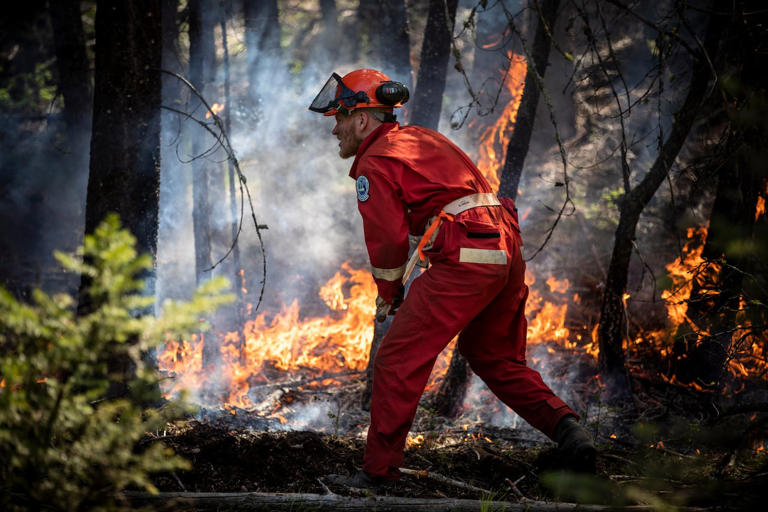
A recruit works to contain and put out a fire near Merritt, B.C., during a training exercise. Though hard hats and other gear are standard for wildfire fighters, respiratory protection is not.
"There's no real mandatory requirements for proper respiratory protection that filters out carbon monoxide, volatile organic compounds, and these fine particulates that we know are associated to the diseases that are killing firefighters.
"We unfortunately bury too many firefighters because of the diseases they acquire from exposures on the fire ground," McMillan said. "We can't put the genie back in the bottle when those exposures happen."
McMillan said the lack of personal protective equipment (PPE) to lessen the exposure of wildfire fighters isn't a provincial problem but a national one, and the IAFF is encouraging all levels of government to invest in protecting firefighters.
"Currently, when we rely on bandanas and things of that nature to protect our respiratory tracts, we know that there's a lot of ground to cover and hopefully we'll see some products on the market shortly,"' he said.
Which masks can do the job?
The National Institute for Occupational Safety and Health (NIOSH) says to date it hasn't approved any respirators on the market which specifically protect against all potential inhalation hazards in the extremes of a wildland fire environment. But, in an email to CBC News, it said some NIOSH-approved masks have been recommended to help protect wildfire fighters from some smoke risks present in a fire.
NIOSH noted that the Department of Homeland Security issued a market survey in November 2022 which looked at available respiratory protection methods for wildland firefighters. It identified 26 air-purifying respirators (APR) and powered air-purifying respirators.
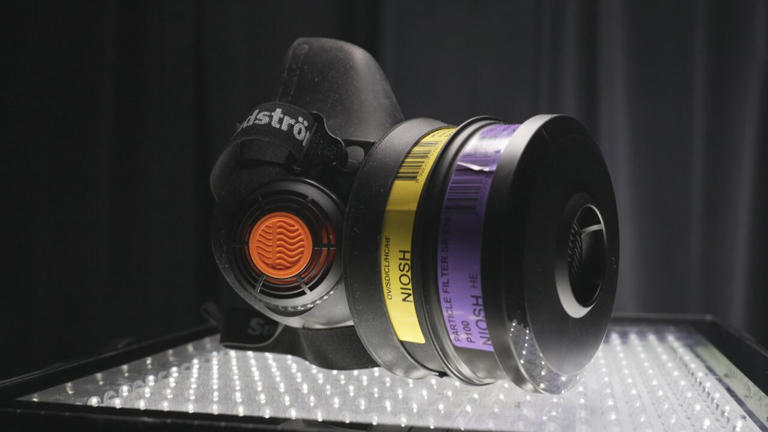
The Sundstrom half-mask SR100 is one of three being studied by the B.C. Wildfire Service and external researchers for possible use by its crews on the ground.
Story by Katie Nicholson • CBC - Jul 6, 2023
After 13 seasons of fighting smoky wildfires in Ontario and B.C., Ian Sachs said his body started to feel the wear and tear.
"You're often in smoke. Even on a small initial attack, you're usually breathing smoke," Sachs said.
"When you're 22 and doing it, you don't think about it. But once you get over 30 and you start feeling the burn, it creeps up on you. That I might have to think about this down the road."
Sachs said the biggest thing he began to notice about acute smoke exposure was how it lingered in his body, especially when he and other FireRangers were often camped in close proximity to the fires they were fighting.
"Waking up with a kind of smoke hangover in the morning," he said. "When that smoke settles, you're breathing it in all night and you'll wake up with that wheeze and that headache."
Sachs said outside of COVID, he was never offered any kind of respiratory protection. But, he's not sure there were any masks that would have worked well or held a tight seal in wildfire conditions.
"You're in the forest. You're taking branches to the face. You're wet. You're sweaty. You're hot. And you're out there doing 16-hour days and then you wear something when you're sleeping in your tent at night? Probably not. It's just I don't know if they can really design something for wildland fire."

A recruit works to contain and put out a fire near Merritt, B.C., during a training exercise. Though hard hats and other gear are standard for wildfire fighters, respiratory protection is not.
(Ben Nelms/CBC)
Indeed, the environment of a wildland fire does make it harder to find a mask that works comfortably, and isn't too bulky to carry for long days and distances.
Still, with wildfire risk growing in Canada and firefighters facing elevated levels of cancer, some are unwilling to accept the status quo where there are no requirements for respiratory protection.
'We ... bury too many firefighters'
In Canada, more than 85 per cent of firefighter fatality claims are attributed to cancer, and research from numerous studies has shown firefighters are at high risk of a number of illnesses, including lung and breast cancer.
International Association of Fire Fighters (IAFF) says those same diseases are associated with wildfire smoke.
Neil McMillan, the director of science and research for the Occupational Health, Safety and Medicine Division of the IAFF, said his organization is concerned about the increased incidence, frequencies and severity of wildfires across Canada and the lack of speciality protective masks for those on the front lines.
"Unfortunately, there isn't a great standard presently for firefighters that have to work in dynamic fire situations, in wildland and wildland urban interface settings in other places across the globe,"' said McMillan.
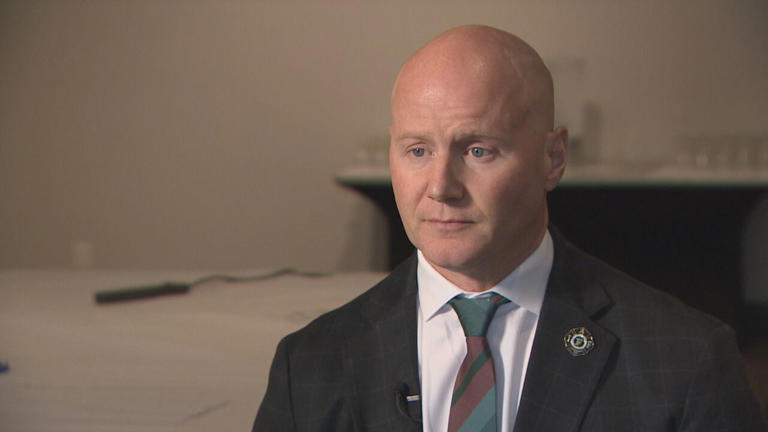
Neil McMillan is the director of science and research of the International Association of Fire Fighters. The IAFF wants governments to invest in better personal protective equipment to protect wildfire fighters from smoke.
Indeed, the environment of a wildland fire does make it harder to find a mask that works comfortably, and isn't too bulky to carry for long days and distances.
Still, with wildfire risk growing in Canada and firefighters facing elevated levels of cancer, some are unwilling to accept the status quo where there are no requirements for respiratory protection.
'We ... bury too many firefighters'
In Canada, more than 85 per cent of firefighter fatality claims are attributed to cancer, and research from numerous studies has shown firefighters are at high risk of a number of illnesses, including lung and breast cancer.
International Association of Fire Fighters (IAFF) says those same diseases are associated with wildfire smoke.
Neil McMillan, the director of science and research for the Occupational Health, Safety and Medicine Division of the IAFF, said his organization is concerned about the increased incidence, frequencies and severity of wildfires across Canada and the lack of speciality protective masks for those on the front lines.
"Unfortunately, there isn't a great standard presently for firefighters that have to work in dynamic fire situations, in wildland and wildland urban interface settings in other places across the globe,"' said McMillan.

Neil McMillan is the director of science and research of the International Association of Fire Fighters. The IAFF wants governments to invest in better personal protective equipment to protect wildfire fighters from smoke.
(Dillon Hodgin/CBC)
"There's no real mandatory requirements for proper respiratory protection that filters out carbon monoxide, volatile organic compounds, and these fine particulates that we know are associated to the diseases that are killing firefighters.
Related video: New warnings about indoor air quality from Canadian wildfires (FOX News) Duration 5:27 View on Watch
"We unfortunately bury too many firefighters because of the diseases they acquire from exposures on the fire ground," McMillan said. "We can't put the genie back in the bottle when those exposures happen."
McMillan said the lack of personal protective equipment (PPE) to lessen the exposure of wildfire fighters isn't a provincial problem but a national one, and the IAFF is encouraging all levels of government to invest in protecting firefighters.
"Currently, when we rely on bandanas and things of that nature to protect our respiratory tracts, we know that there's a lot of ground to cover and hopefully we'll see some products on the market shortly,"' he said.
Which masks can do the job?
The National Institute for Occupational Safety and Health (NIOSH) says to date it hasn't approved any respirators on the market which specifically protect against all potential inhalation hazards in the extremes of a wildland fire environment. But, in an email to CBC News, it said some NIOSH-approved masks have been recommended to help protect wildfire fighters from some smoke risks present in a fire.
NIOSH noted that the Department of Homeland Security issued a market survey in November 2022 which looked at available respiratory protection methods for wildland firefighters. It identified 26 air-purifying respirators (APR) and powered air-purifying respirators.

The Sundstrom half-mask SR100 is one of three being studied by the B.C. Wildfire Service and external researchers for possible use by its crews on the ground.
(Craig Chivers/CBC)
One of those devices is also currently being explored for use by the B.C. Wildfire Service.
The Sundstrom SR100 is NIOSH-approved to offer both protection against particulates in smoke and a number of vapours and other gases. The design allows for people to stack multiple filters for different conditions.
Jonathan Parker, Sundstrom North American sales manger, says he's sold the respirator to over 40 fire departments across Canada and the U.S., and the mask has been used extensively by crews in California, Australia, the UK, Europe, and Indonesia. They even sell it as a part of a specialized wildland fire kit.
Parker says its wildland kit also contains a spark arrester which snaps on the outside and prevents the filters from catching on fire.
"They've been field tested pretty extensively at this point and they've passed every test that they've been put through," Parker said.
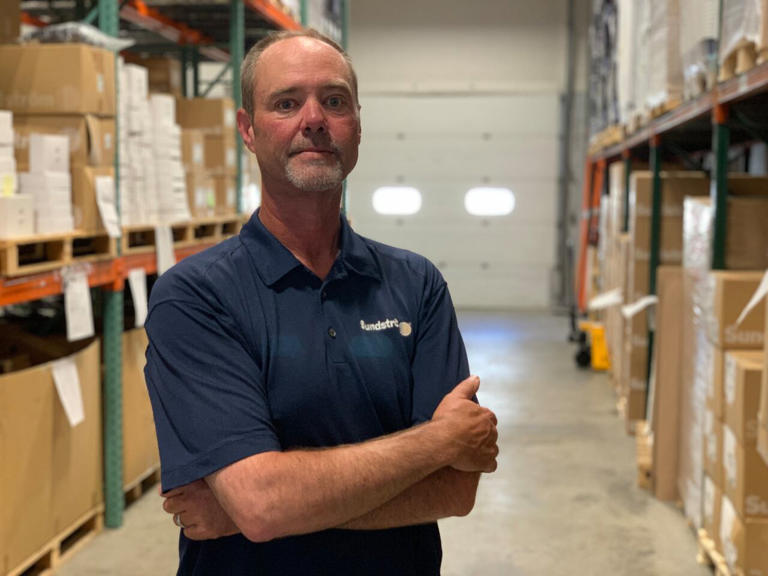
Jonathan Parker is the the North American sales manager for Sundstrom. He says the company has sold its wildland fire kit and respirator to roughly 40 fire departments in Canada and the U.S. and its been used by wildfire fighters around the world. (Roger Woodruff)© Provided by cbc.ca
Provinces testing possible masks
In addition to studying the Sundstrom mask, theWildfire Service says it has partnered with multiple external occupational health and safety groups to test the feasibility of using the Australian-made Fair Air Fire Mask and the RZ M2.5 Mesh Mask on the ground. It says the N95 is currently the only mask in regular use by its crews.
Alberta says it doesn't require wildland firefighters to wear respiratory protective equipment or masks but masks are recommended for discretionary, short-term use while crews are relocating. The province has been participating in a University of Alberta research study with B.C. since 2018 looking into potential health risks for firefighters. The study is also testing several different styles of masks from N-95s to ones used in military or police operations and evaluating them for comfort, durability, how easy they are to maintain, and fire resistance. It says the respiratory protective equipment currently used in Alberta requires fit-testing and medical screening for safe use.
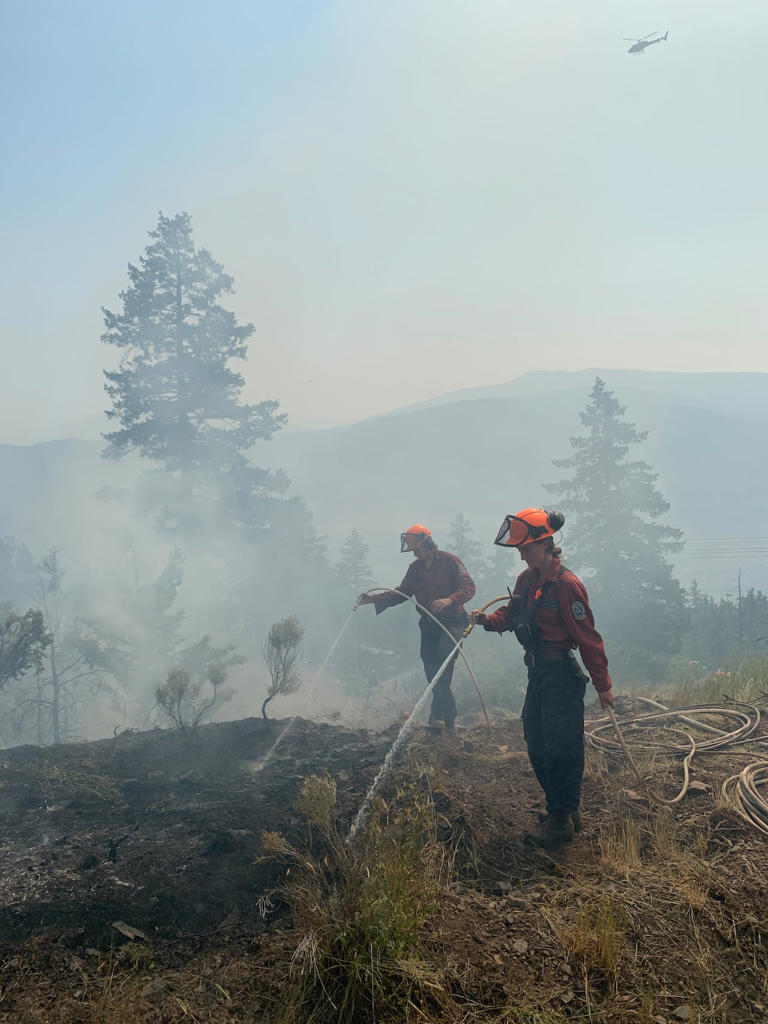
Firefighters with the B.C. Wildfire Service put out hot spots on the McKay Creek wildfire north of Lillooet in 2021.
One of those devices is also currently being explored for use by the B.C. Wildfire Service.
The Sundstrom SR100 is NIOSH-approved to offer both protection against particulates in smoke and a number of vapours and other gases. The design allows for people to stack multiple filters for different conditions.
Jonathan Parker, Sundstrom North American sales manger, says he's sold the respirator to over 40 fire departments across Canada and the U.S., and the mask has been used extensively by crews in California, Australia, the UK, Europe, and Indonesia. They even sell it as a part of a specialized wildland fire kit.
Parker says its wildland kit also contains a spark arrester which snaps on the outside and prevents the filters from catching on fire.
"They've been field tested pretty extensively at this point and they've passed every test that they've been put through," Parker said.

Jonathan Parker is the the North American sales manager for Sundstrom. He says the company has sold its wildland fire kit and respirator to roughly 40 fire departments in Canada and the U.S. and its been used by wildfire fighters around the world. (Roger Woodruff)© Provided by cbc.ca
Provinces testing possible masks
In addition to studying the Sundstrom mask, theWildfire Service says it has partnered with multiple external occupational health and safety groups to test the feasibility of using the Australian-made Fair Air Fire Mask and the RZ M2.5 Mesh Mask on the ground. It says the N95 is currently the only mask in regular use by its crews.
Alberta says it doesn't require wildland firefighters to wear respiratory protective equipment or masks but masks are recommended for discretionary, short-term use while crews are relocating. The province has been participating in a University of Alberta research study with B.C. since 2018 looking into potential health risks for firefighters. The study is also testing several different styles of masks from N-95s to ones used in military or police operations and evaluating them for comfort, durability, how easy they are to maintain, and fire resistance. It says the respiratory protective equipment currently used in Alberta requires fit-testing and medical screening for safe use.

Firefighters with the B.C. Wildfire Service put out hot spots on the McKay Creek wildfire north of Lillooet in 2021.
(B.C. Wildfire Service)
In , Aviation, Forest Fire and Emergency Services says FireRangers do not use masks or respirators on the fire line. The province said where possible crews are positioned strategically on fires upwind thus allowing the FireRangers to work safely. However, particulate filter respirators (P100 or P95) are required for all workers assigned to a prescribed burn in an area where there might be poison ivy.
In , the Société de protection des forêts contre le feu (SOPFEU) told CBC News that N95 respirators are the only type of respiratory protection its teams are using right now and that they are available to all its firefighters and subcontractors.
The RCMP, which is often asked to guard smoke-shrouded roadblocks, assist in evacuations and keep an eye on evacuated communities does have some standards for respirators and masks in place.
In Alberta, RCMP officers with K Division are fit tested every two years for half-face respirators manufactured by 3M or Honeywell, depending on their facial structure. They are also provided 2 types of cartridges for different types of smoke hazards: one for the particulate from the wildfire smoke and a multi-gas combination cartridge which provides additional protection from particulate from the smoke and the chemical by-products of paints, plastics and some other materials.
His fire fighting days now behind him, Ian Sachs says he hopes the next generation of firefighters at least have the option of greater protection from the smoke.
"Hopefully in the next few years there is something and the guys and girls can wear it when they are in those situations. But you can't wear it all the time and I don't think you'll ever get to that point."
In , Aviation, Forest Fire and Emergency Services says FireRangers do not use masks or respirators on the fire line. The province said where possible crews are positioned strategically on fires upwind thus allowing the FireRangers to work safely. However, particulate filter respirators (P100 or P95) are required for all workers assigned to a prescribed burn in an area where there might be poison ivy.
In , the Société de protection des forêts contre le feu (SOPFEU) told CBC News that N95 respirators are the only type of respiratory protection its teams are using right now and that they are available to all its firefighters and subcontractors.
The RCMP, which is often asked to guard smoke-shrouded roadblocks, assist in evacuations and keep an eye on evacuated communities does have some standards for respirators and masks in place.
In Alberta, RCMP officers with K Division are fit tested every two years for half-face respirators manufactured by 3M or Honeywell, depending on their facial structure. They are also provided 2 types of cartridges for different types of smoke hazards: one for the particulate from the wildfire smoke and a multi-gas combination cartridge which provides additional protection from particulate from the smoke and the chemical by-products of paints, plastics and some other materials.
His fire fighting days now behind him, Ian Sachs says he hopes the next generation of firefighters at least have the option of greater protection from the smoke.
"Hopefully in the next few years there is something and the guys and girls can wear it when they are in those situations. But you can't wear it all the time and I don't think you'll ever get to that point."
No comments:
Post a Comment